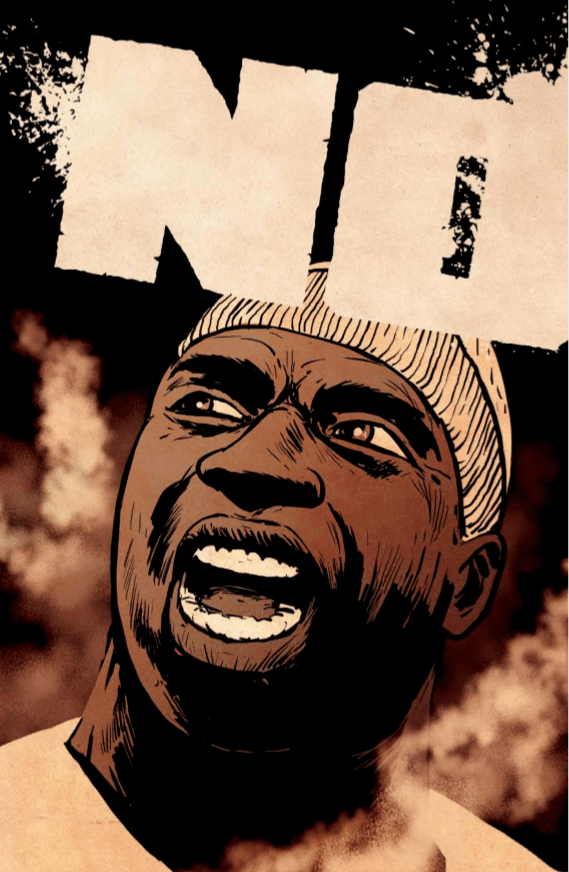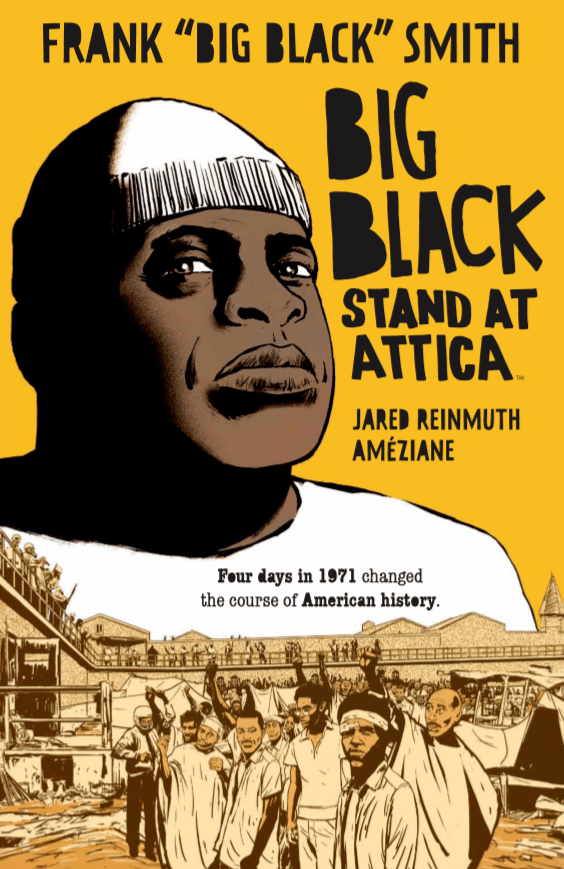Writer: Frank “Big Black” Smith, Jared Reinmuth / Artist: Améziane / Letterer: Andworld Design / Boom! Studios
One of the most poignant facets of the comics medium is its ability to capture time. When you look at a page, when you look at a panel, you are seeing the exact moment that the writer and artist wanted you to see. You control how long you dwell on that moment and you have the unique ability to return to that moment at a near instant. This is something unique to comics: the sheer precision and how deep it can cut. While there are many examples, today I have the honor to talk about Big Black: Stand at Attica, a graphic memoir that captures the life of the titular character Frank “Big Black” Smith and in particular four days in 1971 that would alter the course of American history.
This book is a time capsule and a very obvious labor of love done in the memory of the late Frank Smith who passed in 2004. The one sentiment that kept popping up in my mind as I read was, “this wasn’t that long ago.” Big Black only died sixteen years ago. The core events of this memoir barely happened fifty years ago. Big Black was born a little less than ninety years ago. This story, and the atrocities it depicts, are not far removed from our history. And that makes it that much more powerful. There is an intimacy that we get from Big Black as he provides details about his life and experience, aided by Reinmuth (the step-son of Big Black’s attorney, Dan Meyers) who helped transform Big Black’s writing and testimony into this graphic novel with artwork provided from Améziane. The end result is a hauntingly beautiful collaboration that espouses the horrors that went on in Attica and what the inmates did before, during, and after their stand. There is no understating that this is a difficult read. It is violent and brutal, but it is very much an accurate reflection of the time period.

Big Black: Stand at Attica is divided into six section. The opening provides historic context and a holistic overview of Big Black’s life, both before and after Attica. It is followed by the four days of the Attica prison rebellion, and the last section covers the aftermath. It is a tightly paced story that is constantly educating the reader. Big Black’s voice is strong and resonant as the central narrator and you can feel the empathy and compassion he had towards his fellow inmates. Reinmuth does a brilliant job of texturing the story and providing contextualizing details and insights.
However, it is crucial to recognize the work that both Améziane and Andworld Design did in magnifying the impact of the story. Améziane’s artwork is nothing short of phenomenal. The memoir looks and feels like a documentary. There is a deliberate use of muted color palettes to help dictate the tone of each panel. The illustration subtly changes styles to reflect the different times and mood. You get a real sense of humanity from Améziane’s depictions of the inmates and cruelty of the prison guards. When you couple that with Andworld Design’s brilliant lettering, you have the makings of a graphic memoir that I can very easily see becoming a foundational piece of literature.

This next part can’t be stated enough times: this is not an easy read. This is a story that comes with a lot of content warnings. But if you’re willing to engage with the content, this is a story that will help you understand the systemic issues that surround the prison-industrial complex. This is a story that will illuminate and enlighten. Big Black: Stand At Attica tells the tale of four days, but those four days inform so much about the underlying factors that plague modern society.
This wasn’t that long ago. That’s all I could keep thinking as I finished reading the memoir. And that lingering feeling, that sense of unease and wondering all the ways the world has changed because of the actions and empathy of a man and the people he rallied with and around, it’s honestly the biggest endorsement I could give this graphic memoir.

As of February 19th, you should be able to find Big Black: Stand at Attica physically at your local comic shop or bookstore, and digitally at your typical vendors. If you have an interest in history, memoir, social justice, or just the life of a good man in an extraordinary circumstance, you should track down a copy and experience the story directly.
Want to get Black Nerd Problems updates sent directly to you? Sign up here!
Follow us on Twitter, Facebook and Instagram!



Show Comments